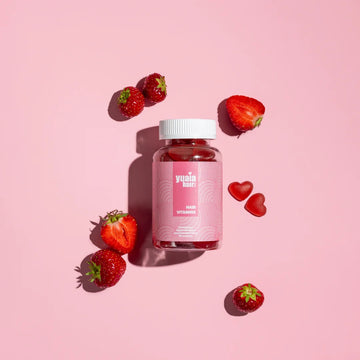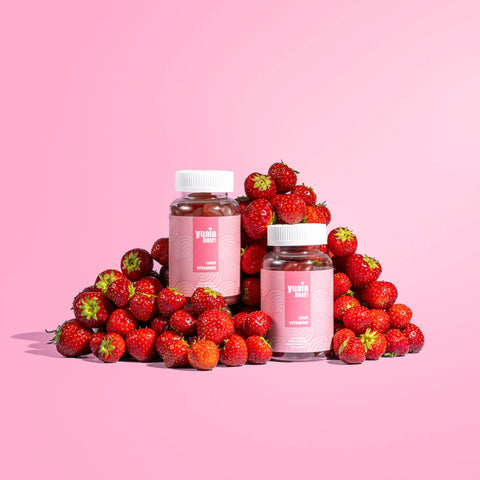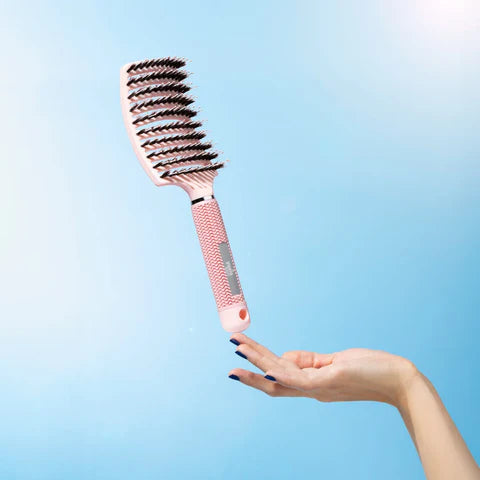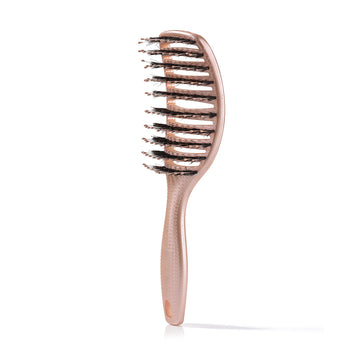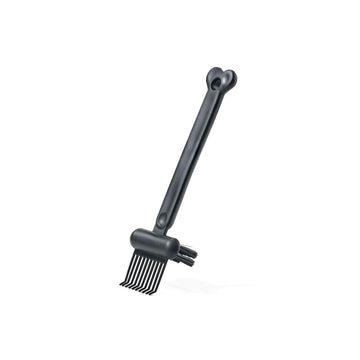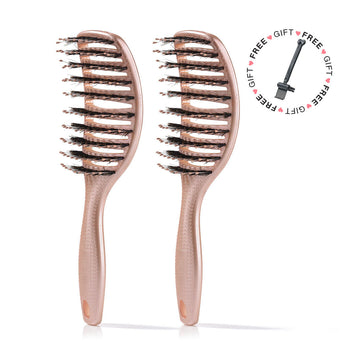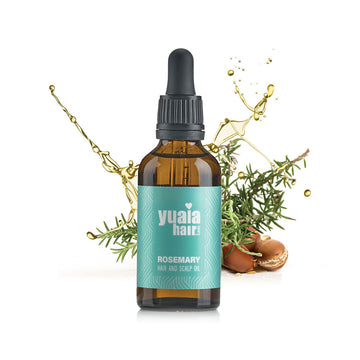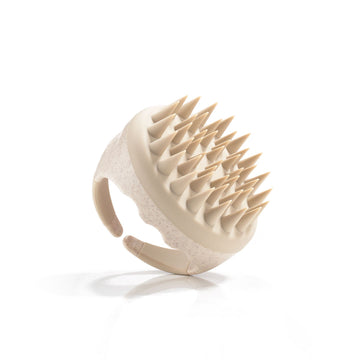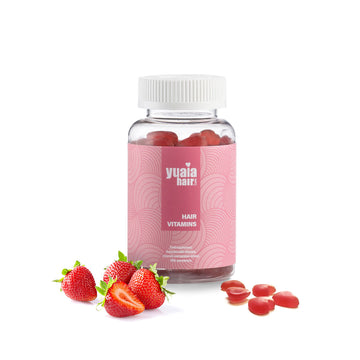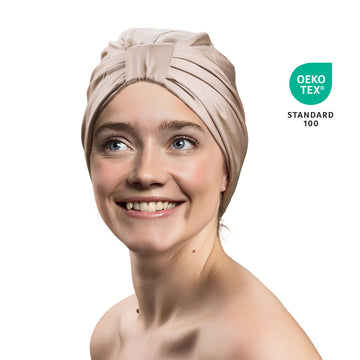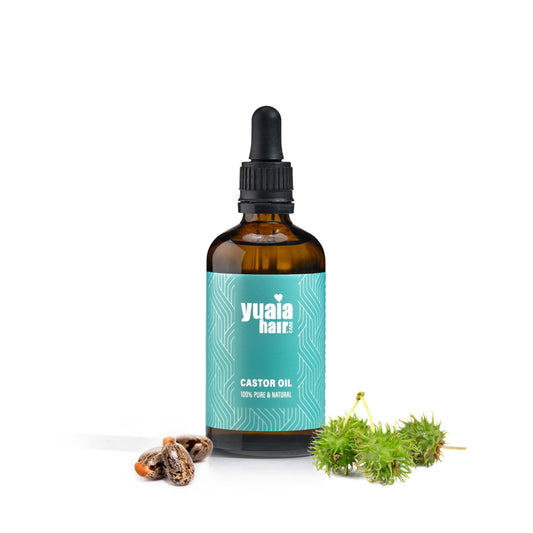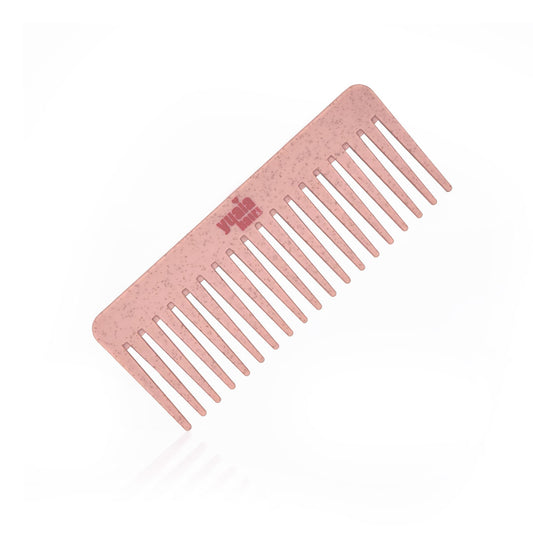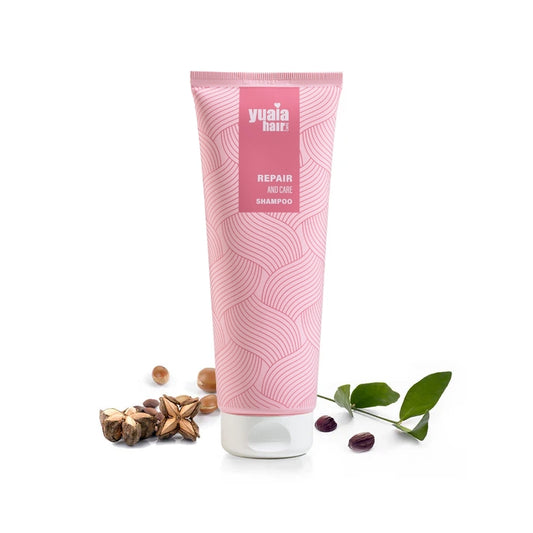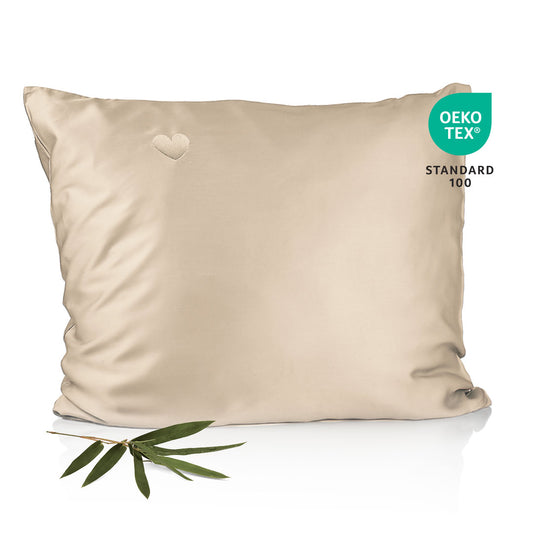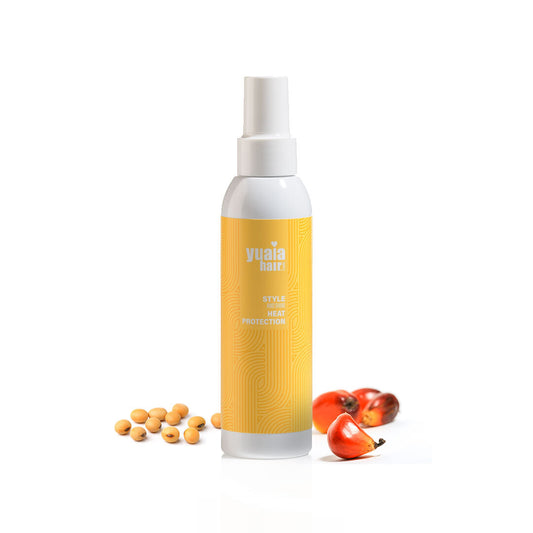
Top moisturizing oils and their benefits
Coconut oil: This oil deeply absorbs into the hair, helping to reduce protein loss, enhance elasticity, and deliver long-lasting hydration. It’s particularly beneficial for dry or chemically treated hair, forming a protective layer against heat and pollution. With consistent use, it can make hair feel softer, smoother, and more manageable with noticeably less frizz.
Argan oil: This oil is lightweight yet deeply nourishing, rich in natural antioxidants and essential fatty acids that help smooth frizz, add shine, and protect against heat damage. It works beautifully as a finishing oil, leaving the hair silky without greasiness, and can be used daily to enhance color vibrancy and tame flyaways.
Jojoba oil: This oil closely resembles the scalp’s natural sebum, helping to balance moisture levels without clogging pores. It soothes dryness, strengthens hair follicles, and promotes a healthy scalp environment that supports growth. Its lightweight texture makes it ideal for fine to medium hair types.
Avocado oil: This oil is naturally rich in nutrients and fatty acids, providing deep nourishment for dry or damaged hair. It penetrates the hair to restore elasticity, minimize breakage, and protect against heat or environmental stress. Regular use helps maintain softness and strength.
Grapeseed oil: This oil contains a high concentration of linoleic acid, helping to seal in moisture without feeling heavy. It acts as a natural conditioner, improving softness, shine, and manageability while protecting against external damage. With frequent use, it can strengthen fragile hair and reduce split ends.
How to apply moisturizing oils in your routine
Moisturizing oils can improve your hair’s condition when used correctly, helping to lock in hydration, smooth frizz, and protect against damage. The key is to apply them strategically — either before washing, on damp hair after cleansing, or as a finishing touch for added shine. Finding the right method for your hair type ensures maximum nourishment without weighing the hair down.
Pre-wash treatment
Massage a few drops of oil into dry hair, concentrating on the ends and areas prone to dryness. Gently comb through to distribute the oil evenly, then leave it on for 20-30 minutes before shampooing. For deeper nourishment, wrap your hair in a warm towel or shower cap to let the oil absorb better. This extra warmth opens up the hair cuticle, allowing more nutrients to penetrate. Regular pre-wash treatments help protect against moisture loss and reduce breakage caused by harsh cleansing.
Post-wash use
After washing, apply a small amount of oil to damp, towel-dried hair, concentrating on the mid-lengths and ends where moisture is most needed. This helps maintain hydration, smooth frizz, and protect against dryness.
For added softness and shine, mix a few drops of oil with your leave-in conditioner or apply it on its own before styling. Avoid the roots if your hair is fine or prone to oiliness. For curly or coarse hair, you can use a slightly larger amount to define curls and preserve bounce. This simple step keeps hair soft, flexible, and nourished throughout the day.
Leave-in treatment
Warm a few drops in your hands and distribute evenly through the hair, starting from the bottom and working upward. Avoid the roots if you have fine or oily hair to prevent heaviness. You can also mix a drop of oil into your styling cream or serum for extra gloss and protection during blow drying. Use your fingers to scrunch or twist the hair for natural texture and a smooth, refined finish.

Tips for best results
- Start with small amounts; a few drops often suffice. Gradually increase based on your hair’s thickness and porosity.
- Use a wide-toothed comb or your fingers to spread the oil evenly from roots to tips.
- Avoid applying oil to unwashed hair repeatedly to prevent buildup and dullness.
- If your hair feels weighed down, switch to a lighter oil or reduce the frequency of application.
- For best results, apply moisturizing oil consistently - 2–3 times per week depending on your hair’s needs.
Myths, mistakes, and what really works
“Oils make hair greasy”
This only happens when too much is used or when the wrong oil is chosen for your hair type. To avoid greasiness, apply a small amount at a time and focus mainly on the mid-lengths and ends. Experiment with lighter oils like argan or grapeseed if you have fine hair, or use heavier options such as coconut or olive oil sparingly.
Overuse and buildup
Over-oiling can block moisture absorption and lead to limp, dull hair. Clarify your hair weekly with a gentle, sulfate-free shampoo to remove residue while maintaining balance. You can also incorporate a scalp exfoliation routine once or twice a month to ensure that oils and styling products don’t accumulate over time.
Mismatched oil
Heavier oils can weigh down fine hair, while light oils may not hydrate coarse hair enough. Matching the oil to your hair type and climate makes a difference - humid environments may call for lighter oils, while dry climates benefit from more nourishing options. Try alternating between two types of oils depending on the season or your hair’s changing needs.
The science behind oils
Scientific studies confirm that certain oils like coconut and argan oil do help improve hair elasticity and reduce breakage when used correctly. They work by filling in the gaps along the hair shaft and reinforcing its natural protective barrier. Using them in moderation and with consistency can make hair appear fuller, smoother, and easier to style.
Supporting habits for optimal results
- Pair oils with hydrating shampoos and conditioners: Look for sulfate-free formulas that help preserve natural oils and maintain moisture balance. Consider using a deep-conditioning mask once a week for extra nourishment.
- Limit heat styling and always apply a heat protectant: If you frequently blow dry or use straighteners, give your hair regular breaks and choose tools with adjustable temperatures to minimize damage.
- Protect your hair from UV exposure and pollutants: Wear a hat or use a UV-protective spray when spending time outdoors, and rinse your hair after swimming in chlorinated or salty water to prevent dryness.
- Stay hydrated throughout the day: Proper internal hydration complements the external benefits of oils.
- Use bamboo pillowcases: These reduce friction and keep hair smoother overnight.
- Regular trims every 6–8 weeks: This helps remove split ends and keeps your hair looking healthy and glossy.
Simple care, beautiful results
Moisturizing oils for hair are a simple, natural way to restore softness, shine, and manageability. The key is to match the oil to your specific hair type and needs. Start small, apply regularly, and observe how your hair responds. With consistent care, your hair can become more resilient, smoother, and beautifully hydrated.
 2-5 day delivery
2-5 day delivery
 25.000+ satisfied customers
25.000+ satisfied customers
 Satisfaction Guarantee
Satisfaction Guarantee

